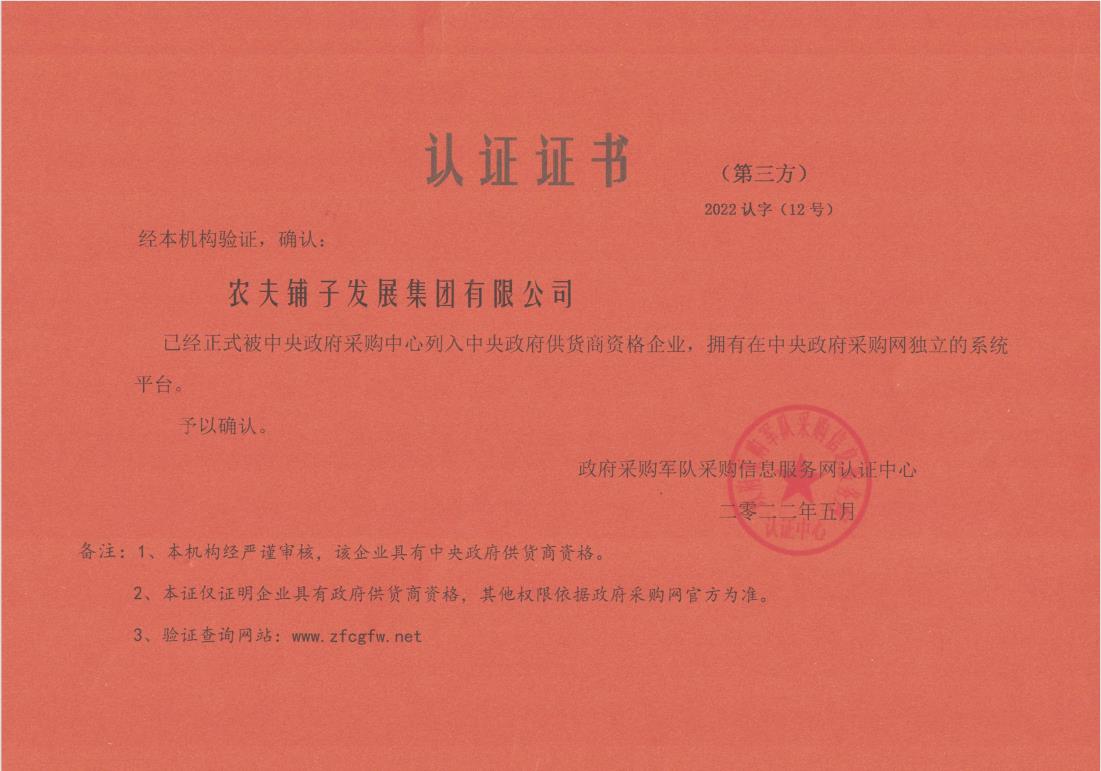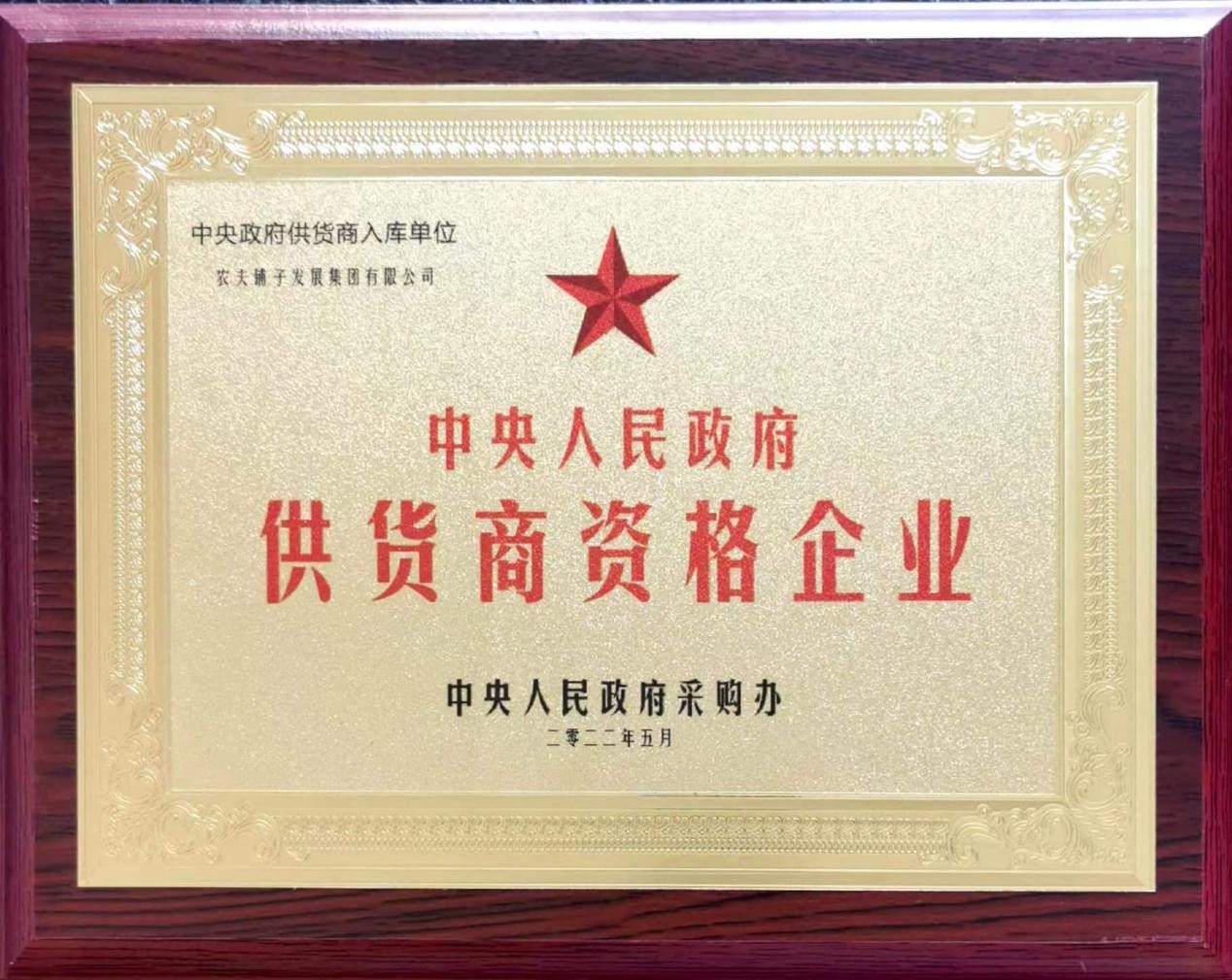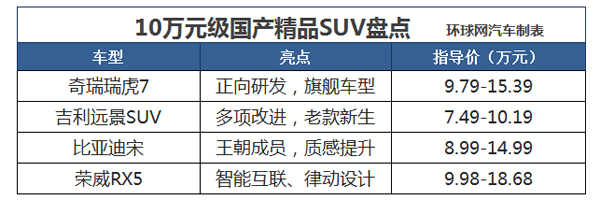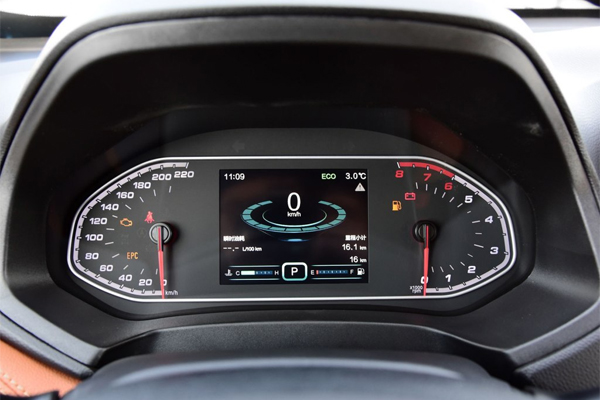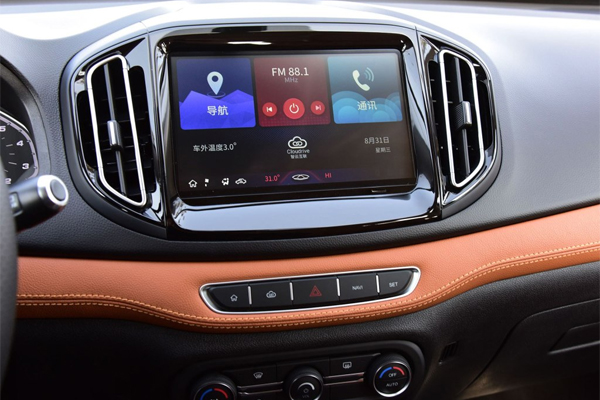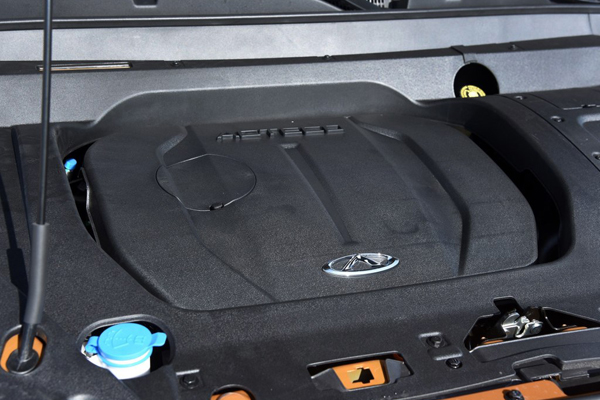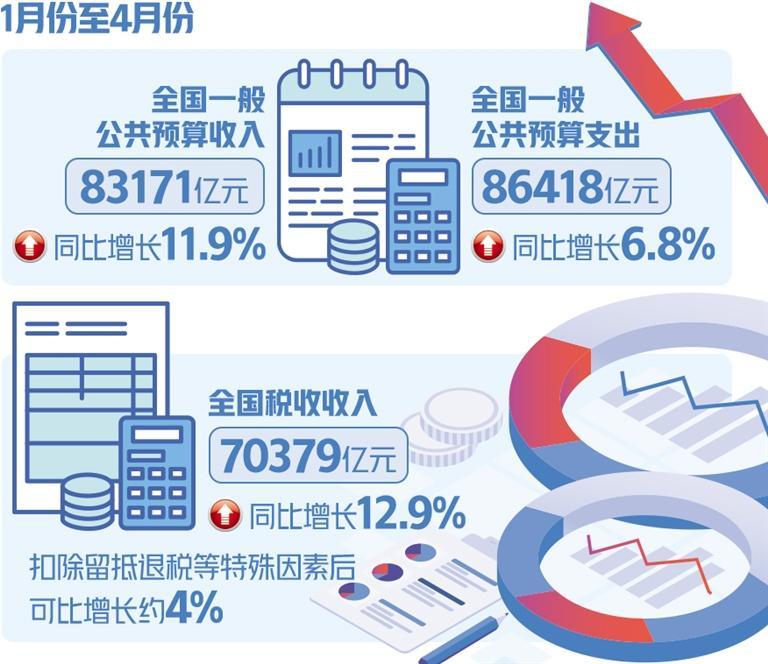
China Quality News Network According to the website of Fangshan District People’s Government on May 6, 2022,Recently, Fangshan District Market Supervision Administration continued to carry out food safety inspection in catering industry, and investigated and dealt with 54 catering stores in Fangshan District according to law. The investigation situation is as follows:
1. Beijing Longjingxuan Catering Co., Ltd. (authentic Lanzhou Lamian Noodles)
The party concerned is suspected of engaging in food business beyond the permitted scope of business projects, which violates the provisions of the first paragraph of Article 16 of the Measures for the Investigation and Punishment of Internet Food Safety Violations. According to Article 38 of the Measures for the Investigation and Punishment of Internet Food Safety Violations and the Food Safety Law of People’s Republic of China (PRC) (2015 edition) Article 122, paragraph 1, proposes to impose an administrative penalty of fine and stop online business activities.
2. Beijing Xiaocheng Fisherman Catering Management Co., Ltd. Yu Dajie Branch (Yipin Braised Pot)
The act of changing the layout process without permission violated the provisions of Article 47 of the Food Safety Law of People’s Republic of China (PRC), and according to the provisions of Item 11, Paragraph 1, Article 126 of the Food Safety Law of People’s Republic of China (PRC), the party was given an administrative punishment of warning and stopped online business.
3. Beijing Xinhong Zhuangyuan Catering Management Co., Ltd. Yu Dajie Store (Hongzhuangyuan)
The party concerned’s behavior without reasonable technological process violated the provisions of Item 4, Paragraph 1, Article 33 of People’s Republic of China (PRC) Food Safety Law, and was given administrative punishment of warning and stopped online business according to Item 13, Paragraph 1, Article 126 of People’s Republic of China (PRC) Food Safety Law.
4. Beijing New Century Youth Catering Management Co., Ltd. No.10 Company (Youth Restaurant)
The act of arranging people who have not obtained health certificates to engage in the work of directly imported food violates the provisions of the second paragraph of Article 45 of the Food Safety Law of People’s Republic of China (PRC), and according to the provisions of Item (6) of the first paragraph of Article 126 of the Food Safety Law of People’s Republic of China (PRC), the parties are given administrative punishment of warning and stop online business.
5. Beijing Hannashan Jin Xin Catering Management Co., Ltd. Yu Dajie Branch (Hannashan)
The failure of the party concerned to establish and abide by the incoming inspection record system violates the provisions of Paragraph 2 of Article 53 of the Food Safety Law of People’s Republic of China (PRC), and according to the provisions of Item 3 of Paragraph 1 of Article 126 of the Food Safety Law of People’s Republic of China (PRC), the party concerned is given an administrative punishment of warning and stops online business.
6. Ikeda Zhuoyue (Beijing) Catering Management Co., Ltd. Fangshan No.1 Branch (Ikeda Sushi)
The behavior of the parties involved in processing food sushi directly imported in the rough processing area violated the Food Safety Law of People’s Republic of China (PRC).sequenceArticle 33, paragraph 1 (4), according to the provisions of Article 126, paragraph 1 (13) of the Food Safety Law of People’s Republic of China (PRC), give administrative punishment of warning and stop online business activities.
7. Beijing Liping Ju Trading Co., Ltd.
The behavior of the parties engaging in food business activities beyond the business scope specified in the food business license violates the provisions of Article 27, paragraph 1, of the Measures for the Administration of Food Business License (2015 edition), and according to the provisions of Article 49, paragraph 1, of the Measures for the Administration of Food Business License (2015 edition), they are given administrative punishment of warning and stop online business activities.
8. Beijing Hongdexuan Catering Management Co., Ltd. (Baishunzhai)
The failure of the parties to perform the incoming inspection record system violates the Food Safety Law of People’s Republic of China (PRC).sequenceParagraph 2 of Article 53, according to Item 3 of Paragraph 1 of Article 126 of People’s Republic of China (PRC) Food Safety Law, shall be given administrative punishment of warning and stop online business activities.
9. Beijing Doudian Yaxin Snack Bar (Yaxin Breakfast)
The act of engaging in food production and marketing activities without permission violates the provisions of the first paragraph of Article 8 of the Regulations on the Administration of Small-scale Food Production and Marketing in Beijing, and according to the provisions of the first paragraph of Article 22 of the Regulations on the Administration of Small-scale Food Production and Marketing in Beijing, an administrative penalty of 5,000 yuan is imposed.
10. Beijing Wayaotou Chaoyang Restaurant (Chaoyang Restaurant)
The failure of the parties to perform the incoming inspection record system violates the Food Safety Law of People’s Republic of China (PRC).sequenceParagraph 2 of Article 53, according to Item 3 of Paragraph 1 of Article 126 of People’s Republic of China (PRC) Food Safety Law, shall be given administrative punishment of warning and stop online business activities.
11. Beijing Doudian Duofuju Restaurant (Duofuju)
The failure of the parties to perform the incoming inspection record system violates the Food Safety Law of People’s Republic of China (PRC).sequenceParagraph 2 of Article 53, according to Item 3 of Paragraph 1 of Article 126 of People’s Republic of China (PRC) Food Safety Law, shall be given administrative punishment of warning and stop online business activities.
12. Beijing Hongshun Liyuan Catering Co., Ltd. (Puzi Barbecue)
The failure of the parties to deal with the changes in production and operation conditions in accordance with the regulations violates the provisions of Article 47 of the Food Safety Law of People’s Republic of China (PRC) (2015 Edition), and according to the Food Safety Law of People’s Republic of China (PRC) (2015 edition) Article 126, paragraph 1 (11), gives administrative punishment of warning and stops online business activities.
13. Beijing Dehuijia Trading Co., Ltd. Branch (Luke Coffee)
The act of engaging in food production and marketing activities without permission violates the provisions of the first paragraph of Article 8 of the Regulations on the Administration of Small-scale Food Production and Marketing in Beijing, and according to the provisions of the first paragraph of Article 22 of the Regulations on the Administration of Small-scale Food Production and Marketing in Beijing, an administrative penalty of 5,000 yuan is imposed.
14. Beijing Xunjie Lida Computer Technology Training Center (Yipin Fresh Meat)
If the production and operation conditions of the parties have changed and they fail to deal with it according to the regulations, it violates the provisions of Article 47 of the Food Safety Law of People’s Republic of China (PRC). According to the provisions of Item (11) of Paragraph 1 of Article 126 of the Food Safety Law of People’s Republic of China (PRC) (2018 edition), they will be given an administrative punishment of warning and stop online business activities.
15. Beijing Wuzhou Yunjin Catering Co., Ltd. (Wuzhou Yunjin Food City)
The party’s behavior of incomplete purchase acceptance system violates the Food Safety Law of People’s Republic of China (PRC).sequenceIn the first and second paragraphs of Article 53, according to the provisions of Item (3) of Paragraph 1 of Article 126 of the Food Safety Law of People’s Republic of China (PRC), the administrative punishment of warning shall be given and the online business behavior shall be stopped.
16. Repair Department of Lihe Farm Tools in Doudian Town, Fangshan District, Beijing (Crossing the Bridge Rice Noodles)
The behavior of the parties who change the layout without authorization, change the production and operation conditions, and fail to deal with it according to the regulations violates the provisions of Article 47 of the Food Safety Law of People’s Republic of China (PRC). According to the provisions of Item (11) of Paragraph 1 of Article 126 of the Food Safety Law of People’s Republic of China (PRC) (2018 edition), they are given an administrative punishment of warning and stop online operation.
17. Beijing Xinlemeikou Xiangxiang Catering Co., Ltd.
The failure of the parties to establish and abide by the food incoming inspection record system violates the Food Safety Law of People’s Republic of China (PRC).sequenceParagraph 2 of Article 53, according to Item 3 of Paragraph 1 of Article 126 of People’s Republic of China (PRC) Food Safety Law, shall be given administrative punishment of warning and stop online business activities.
18. Beijing Doudian Ruziniu Trading Co., Ltd.
The failure of the parties to perform the incoming inspection record system violates the Food Safety Law of People’s Republic of China (PRC).sequenceParagraph 2 of Article 53, according to Item 3 of Paragraph 1 of Article 126 of People’s Republic of China (PRC) Food Safety Law, shall be given administrative punishment of warning and stop online business activities.
19. Beijing Fulai Yonghui Restaurant (Shanxi Noodle Restaurant)
The failure of the parties to perform the incoming inspection record system violates the Food Safety Law of People’s Republic of China (PRC).sequenceParagraph 2 of Article 53, according to Item 3 of Paragraph 1 of Article 126 of People’s Republic of China (PRC) Food Safety Law, shall be given administrative punishment of warning and stop online business activities.
20. Beijing Xiangli Laoyuanzi Catering Co., Ltd. (Jinxiangyuan)
The fact that the employee is still employed without pre-job health examination and the employee’s hand is scratched violates the provisions of Article 47 of the Food Safety Law of People’s Republic of China (PRC) (2015 edition), and according to the provisions of Article 70 of the Regulations for the Implementation of the Food Safety Law of People’s Republic of China (PRC), he is given an administrative punishment of warning and stops online business activities.
21. The second branch of Beijing Youziwei Catering Co., Ltd. (micro seafood)
The failure of the parties to perform the incoming inspection record system violates the Food Safety Law of People’s Republic of China (PRC).sequenceParagraph 2 of Article 53, according to Item 3 of Paragraph 1 of Article 126 of People’s Republic of China (PRC) Food Safety Law, shall be given administrative punishment of warning and stop online business activities.
22. Liangxiang Store of Beijing Pifu Hot Pot Catering Co., Ltd. (Pifu Hot Pot)
The disinfection cabinet was not connected to the power supply, and personal items were stored in the cleaning cabinet, which violated the provisions of Item (5) of Article 33 of People’s Republic of China (PRC) Food Safety Law (2018 edition). According to the provisions of Item (5) of Paragraph 1 of Article 126 of People’s Republic of China (PRC) Food Safety Law (2018 edition), the party was given an administrative punishment of warning and stopped online business.
23. Beijing Diandachi Tianjie Catering Co., Ltd. (Diandachi)
The act of arranging people who have not obtained health certificates to engage in the work of directly imported food violates the provisions of Paragraph 2 of Article 45 of People’s Republic of China (PRC) Food Safety Law and Item (6) of Paragraph 1 of Article 126 of People’s Republic of China (PRC) Food Safety Law, giving administrative punishment of warning and stopping online business.
24. Beijing Zhenqiangshun Construction Equipment Rental Station (Tintin Bistro)
The party concerned fails to regularly maintain and inspect the catering service facilities, which violates the provisions of the first paragraph of Article 56 of the Food Safety Law of People’s Republic of China (PRC) (2021 edition). According to the provisions of the first paragraph (5) of Article 126 of the Food Safety Law of People’s Republic of China (PRC) (2021 edition), the party concerned is given an administrative punishment of warning and stops online business.
25. Beijing Yimeng Yongli Trading Co., Ltd. (Sanmao Sauced Meat Restaurant)
If the production and operation conditions of the parties have changed and they fail to deal with it according to the regulations, it violates the provisions of Article 47 of the Food Safety Law of People’s Republic of China (PRC). According to the provisions of Item (11) of Paragraph 1 of Article 126 of the Food Safety Law of People’s Republic of China (PRC) (2018 edition), they will be given an administrative punishment of warning and stop online business activities.
26. Boyi Kindergarten in Fangshan District, Beijing
The failure of the party concerned to establish and abide by the incoming inspection record system violates the provisions of paragraph 2 of Article 53 of People’s Republic of China (PRC) Food Safety Law (2021 edition), and he is given an administrative penalty of warning according to the provisions of paragraph 1 (3) of Article 126 of People’s Republic of China (PRC) Food Safety Law (2021 edition).
27. Beijing Xinjiayao Catering Co., Ltd. (Fish Are Together)
The behavior of the parties with incomplete purchase acceptance records violated the provisions of paragraph 2 of Article 53 of the Food Safety Law of People’s Republic of China (PRC) (2021 edition), and according to the provisions of paragraph 1 (3) of Article 126 of the Food Safety Law of People’s Republic of China (PRC) (2021 edition), they were given administrative punishment of warning and stopped online business.
28. Beijing Meibaizi Restaurant (tian teacher Braised Pork)
The behavior of the parties with incomplete purchase acceptance records violated the provisions of paragraph 2 of Article 53 of the Food Safety Law of People’s Republic of China (PRC) (2021 edition), and according to the provisions of paragraph 1 (3) of Article 126 of the Food Safety Law of People’s Republic of China (PRC) (2021 edition), they were given administrative punishment of warning and stopped online business.
29. Beijing Childhood Catering Co., Ltd. (old Beijing with elbow)
If the production and operation conditions of the parties have changed and they fail to deal with it according to the regulations, it violates the provisions of Article 47 of the Food Safety Law of People’s Republic of China (PRC). According to the provisions of Item (11) of Paragraph 1 of Article 126 of the Food Safety Law of People’s Republic of China (PRC) (2018 edition), they will be given an administrative punishment of warning and stop online business activities.
30. Beijing Brothers Zhuangjiayuan Catering Co., Ltd. (Oriental Restaurant)
The failure of the parties to publicize and update the information of the third-party platform providers of online catering services and catering service providers online as required violates the provisions of Article 11 of the Measures for the Supervision and Administration of Food Safety of Online Catering Services, and gives administrative punishment of warning and stops online business operations according to the provisions of Article 32 of the Measures for the Supervision and Administration of Food Safety of Online Catering Services.
31. Beijing Yuren Wharf Catering Co., Ltd. (Yuren Wharf (Zicaowu Store))
The behavior of the parties selling pickled cabbage Longli fish and blood-flourishing Longli fish in the US Mission is false, which violates the provisions of Article 11 of the Measures for the Supervision and Administration of Food Safety in Online Catering Services and Article 32 of the Measures for the Supervision and Administration of Food Safety in Online Catering Services, and gives administrative punishment of warning and stops online business activities.
32. Beijing Haoyun Linglong Snack Bar (Linglong Snack Bar)
The use of unwashed, disinfected or unqualified tableware, drinking utensils and containers for directly-eaten food violates the provisions of Item (5) of Article 33 of the Food Safety Law of People’s Republic of China (PRC) (2018 edition) and Item (5) of Paragraph 1 of Article 126 of the Food Safety Law of People’s Republic of China (PRC) (2018 edition), giving administrative punishment of warning and stopping online business.
33. Zhang Fang Jipinxuan Farm Restaurant (Jipinxuan Restaurant)
The party concerned fails to establish a food safety management system as required, or fails to equip, train and assess food safety management personnel as required, which violates the provisions of Paragraph 1 of Article 44 of the Food Safety Law of People’s Republic of China (PRC) (2018 edition), and according to the provisions of Paragraph 1 (2) of Article 126 of the Food Safety Law of People’s Republic of China (PRC) (2018 edition), he is given an administrative penalty of warning and stops online business operations.
34. Yan Dou Haili Shuan Rou Ju (Yan Dou Haili Shuan Rou Ju)
The act of arranging people who have not obtained health certificates to engage in the work of directly imported food violates the provisions of Paragraph 2 of Article 45 of People’s Republic of China (PRC) Food Safety Law and Item (6) of Paragraph 1 of Article 126 of People’s Republic of China (PRC) Food Safety Law, giving administrative punishment of warning and stopping online business.
35. Beijing Cuixiangju Catering Co., Ltd. (Yunnan Snacks)
The act of arranging people who have not obtained health certificates to engage in the work of directly imported food violates the provisions of Paragraph 2 of Article 45 of People’s Republic of China (PRC) Food Safety Law and Item (6) of Paragraph 1 of Article 126 of People’s Republic of China (PRC) Food Safety Law, giving administrative punishment of warning and stopping online business.
36. Beijing Ruipusen Health Technology Co., Ltd. (Chuanxiang Home Cooking)
If a party fails to store, sell or clean up the food in stock as required, he shall be given an administrative punishment of warning and stop online business according to the provisions of Paragraph 1 of Article 54 of People’s Republic of China (PRC) Food Safety Law (2018 edition) and Article 132 of People’s Republic of China (PRC) Food Safety Law (2018 edition).
37. Beijing Sihai Lutong Catering Co., Ltd. (Chengdu Cuisine)
The party concerned failed to implement the control requirements of the production and operation process according to the regulations, did not have a reasonable technological process, and failed to prevent the food to be processed from cross-contamination with directly imported food, raw materials and finished products, which violated the provisions of Item (4) of Article 33 of the Food Safety Law of People’s Republic of China (PRC). According to the provisions of Item (13) of Paragraph 1 of Article 126 of the Food Safety Law of People’s Republic of China (PRC), he was given an administrative punishment of warning and stopped online operation.
38. Beijing Zhishiheng Catering Co., Ltd.
The failure of the parties to implement the incoming inspection record system violated the provisions of paragraph 2 of Article 53 of the Food Safety Law of People’s Republic of China (PRC), and was given an administrative penalty of warning according to the provisions of item 3 of paragraph 1 of Article 126 of the Food Safety Law of People’s Republic of China (PRC).
39. Beijing Shuotong Xianglong Restaurant (Shanxi Noodle)
The act of changing the business conditions without authorization violates the provisions of Article 47 of the Food Safety Law of People’s Republic of China (PRC), and according to the provisions of Item (11) of the first paragraph of Article 126 of the Food Safety Law of People’s Republic of China (PRC), the party concerned is given an administrative punishment of warning and stops online business activities.
40. Beijing Xiangxiang Catering Co., Ltd.
The parties’ failure to implement the control requirements of production and operation process in accordance with the regulations violates the provisions of Item (1) of Paragraph 1 of Article 33 of the Food Safety Law of People’s Republic of China (PRC), and according to the provisions of Item (13) of Paragraph 1 of Article 126 of the Food Safety Law of People’s Republic of China (PRC), they are given administrative punishment of warning and stop online operation.
41. Beijing Fanghua Iron Porcelain Catering Co., Ltd. (iron porcelain hotpot)
The party concerned arranged to engage in the work of contacting directly imported food without obtaining a health certificate, which violated the provisions of the second paragraph of Article 45 of the Food Safety Law of People’s Republic of China (PRC). According to the provisions of Item (6) of the first paragraph of Article 126 of the Food Safety Law of People’s Republic of China (PRC), he was given an administrative punishment of warning and stopped online business.
42. Beijing Tianyu Villa Tourism Development Co., Ltd. (Tianyu Villa)
The party concerned did not have a place for food raw material processing and food processing and storage suitable for the variety and quantity of food produced and operated, and did not keep the environment of the place clean and tidy, which violated the provisions of Item (1) of Paragraph 1 of Article 33 of the Food Safety Law of People’s Republic of China (PRC) (2021 edition), and was given an administrative penalty of warning according to the provisions of Item (13) of Paragraph 1 of Article 126 of the Food Safety Law of People’s Republic of China (PRC) (2021 edition).
43. Beijing Anxin Jiawei Catering Management Co., Ltd. (Anxin Jiawei)
The act of arranging people who have not obtained health certificates to engage in food work for direct import violates the provisions of the second paragraph of Article 45 of the Food Safety Law of People’s Republic of China (PRC). According to the provisions of Item (6) of the first paragraph of Article 126 of the Food Safety Law of People’s Republic of China (PRC), the party concerned shall be given an administrative punishment of warning and stop online business.
44. Beijing Zhihe Home Catering Co., Ltd. (Huisen Restaurant)
The party concerned fails to check the license and relevant supporting documents at the time of purchase, or fails to establish and abide by the system of incoming inspection records, ex-factory inspection records and sales records as required, which violates the provisions of paragraph 2 of Article 53 of People’s Republic of China (PRC) Food Safety Law, and gives administrative punishment of warning and stops online business according to the provisions of paragraph 1 (3) of Article 126 of People’s Republic of China (PRC) Food Safety Law.
45. Beijing Yushuixiang Farmhouse Restaurant (Yushuixiang Farmhouse)
The party concerned fails to check the license and relevant supporting documents at the time of purchase, or fails to establish and abide by the system of incoming inspection records, ex-factory inspection records and sales records as required, which violates the provisions of paragraph 2 of Article 53 of People’s Republic of China (PRC) Food Safety Law, and gives administrative punishment of warning and stops online business according to the provisions of paragraph 1 (3) of Article 126 of People’s Republic of China (PRC) Food Safety Law.
46. Beijing Chaozhuo Catering Service Co., Ltd. (Super Spicy)
The change of the items specified in the food business license of the party concerned violates the provisions of the first paragraph of Article 27 of the Measures for the Administration of Food Business License, and according to the provisions of the first paragraph of Article 49 of the Measures for the Administration of Food Business License, the administrative punishment of warning is given and the online business behavior is stopped.
47. The 13th Branch of Beijing Liangxiang Jintong Trading Co., Ltd. (Yang San Ge)
The behavior of poor environmental sanitation in the operation room violated the provisions of Article 47 of the Food Safety Law of People’s Republic of China (PRC), and according to the provisions of Item (11) of the first paragraph of Article 126 of the Food Safety Law of People’s Republic of China (PRC), the party concerned was given an administrative punishment of warning and stopped online business activities.
48. Beijing Xujie Catering Co., Ltd. (Shanxi Noodles King)
The party concerned arranged to engage in the work of contacting directly imported food without obtaining a health certificate, which violated the provisions of the second paragraph of Article 45 of the Food Safety Law of People’s Republic of China (PRC). According to the provisions of Item (6) of the first paragraph of Article 126 of the Food Safety Law of People’s Republic of China (PRC), he was given an administrative punishment of warning and stopped online business.
49. Beijing Yusheng Julai Auto Parts Sales Center (Huimian Noodles, Henan)
If the production and operation conditions of the parties have changed and they fail to deal with it according to the regulations, it violates the provisions of Article 47 of the Food Safety Law of People’s Republic of China (PRC). According to the provisions of Item (11) of Paragraph 1 of Article 126 of the Food Safety Law of People’s Republic of China (PRC) (2018 edition), they will be given an administrative punishment of warning and stop online business activities.
50. Beijing Juweiyuan Catering Management Co., Ltd. (Juweiyuan)
If the production and operation conditions of the parties have changed and they fail to deal with it according to the regulations, it violates the provisions of Article 47 of the Food Safety Law of People’s Republic of China (PRC). According to the provisions of Item (11) of Paragraph 1 of Article 126 of the Food Safety Law of People’s Republic of China (PRC) (2018 edition), they will be given an administrative punishment of warning and stop online business activities.
51. Beijing Zhuangtou Fengxian Department Store (Breakfast)
If the production and operation conditions of the parties have changed and they fail to deal with it according to the regulations, it violates the provisions of Article 47 of the Food Safety Law of People’s Republic of China (PRC). According to the provisions of Item (11) of Paragraph 1 of Article 126 of the Food Safety Law of People’s Republic of China (PRC) (2018 edition), they will be given an administrative punishment of warning and stop online business activities.
52. Beijing Yujia Renhe Catering Management Co., Ltd. (Your heartbeat)
The failure of the parties to establish the incoming inspection system violates the provisions of paragraph 2 of Article 53 of the Food Safety Law of People’s Republic of China (PRC), and according to the provisions of paragraph 1 (3) of Article 126 of the Food Safety Law of People’s Republic of China (PRC), they are given administrative punishment of warning and stop online business.
53. Beijing Zilu Food Co., Ltd.
The party concerned’s failure to store and sell food or clean up the food in stock violated the first paragraph of Article 54 of People’s Republic of China (PRC) Food Safety Law, and was given an administrative penalty of warning according to the provisions of Article 132 of People’s Republic of China (PRC) Food Safety Law (2018 edition).
54. Beijing Old Town Feast Catering Co., Ltd.
The parties involved in the production of food and food additives failed to establish and abide by the system of incoming inspection records, ex-factory inspection records and sales records, which violated the provisions of the second paragraph of Article 53 of the Food Safety Law of People’s Republic of China (PRC), and was given an administrative penalty of warning according to the provisions of Item (3) of the first paragraph of Article 126 of the Food Safety Law of People’s Republic of China (PRC) (2018 edition).


